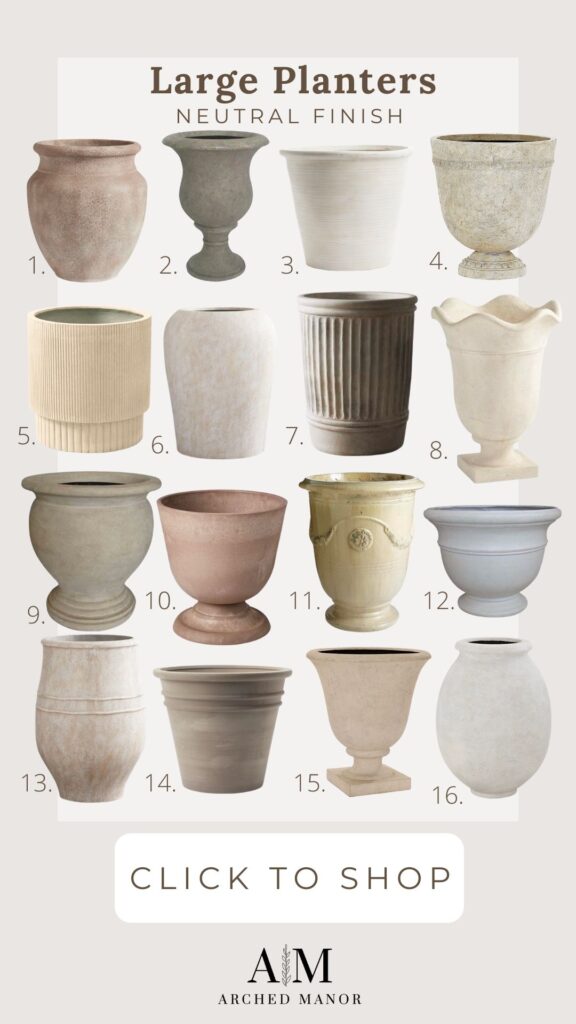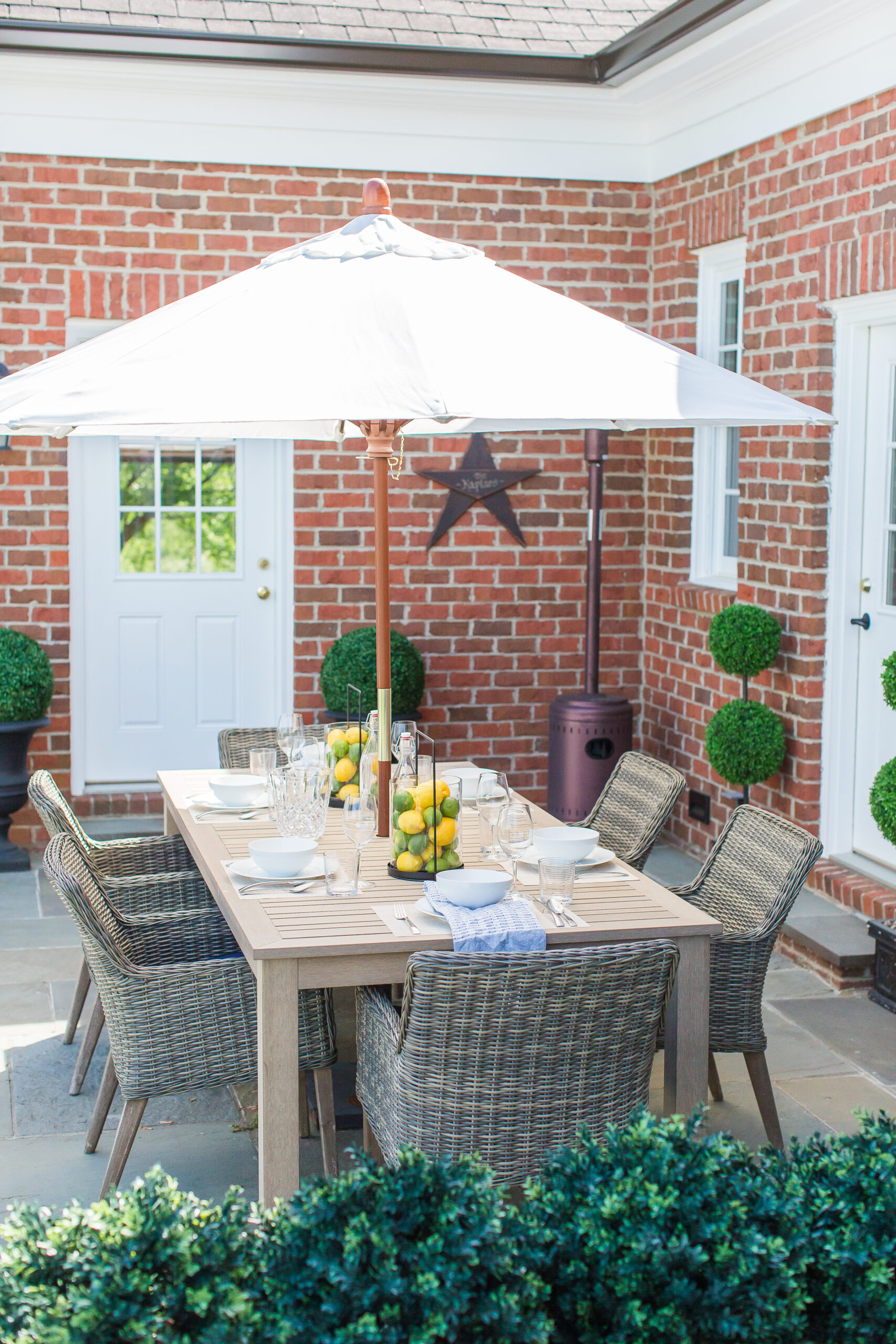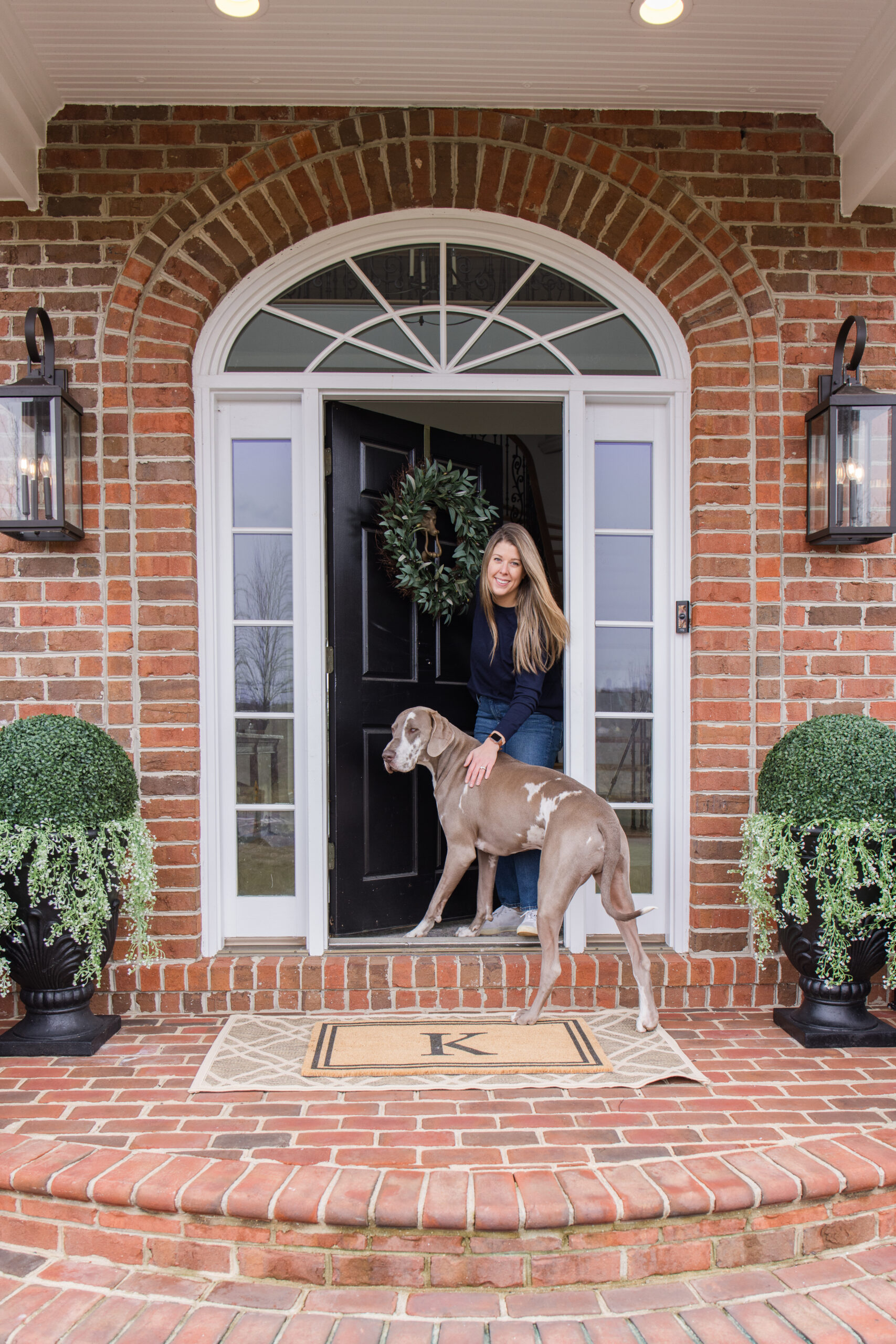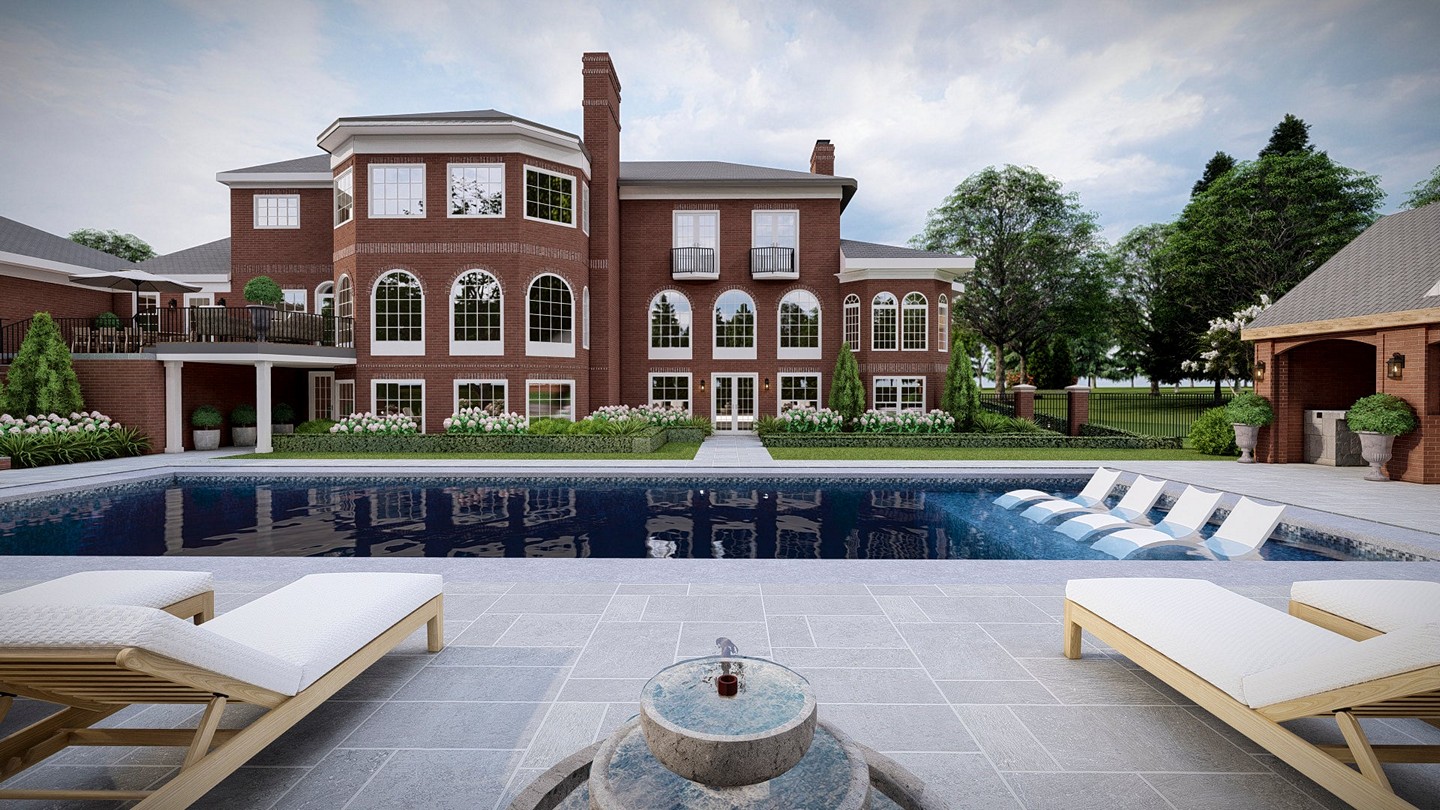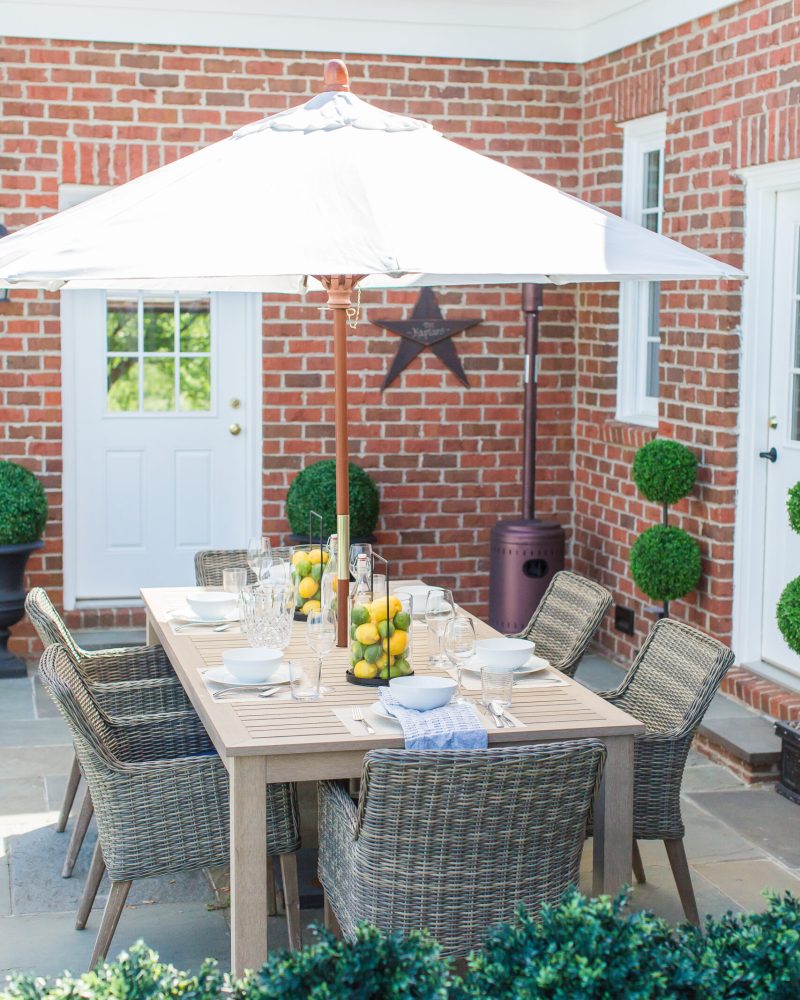
Two beautiful and large stone planters were handed down to us a couple of years ago – score! Last year, we dropped the ball and never came up with a good planter idea, so they sat empty and alone. At the risk of making the same mistake, we set off this Spring and conducted an embarrassing amount of research on container flowers and plants in the hopes of finding the perfect planter arrangement to compliment our home’s brick exterior. And as much as John wanted to, I gave a hard NO on simply putting one of our favorite faux plants in there!
Ultimately, we landed on a neutral planter combination with just simple, white flowers mixed with green plants. We love the classic and timeless look of using an assortment of various flowers all in the same color. We came across this fantastic blog post by Monika Hibbs where she shares three different planter ideas. Lucky for us, the first one she shared was a white planter arrangement and it was exactly the inspiration and validation we needed. We used some of the flowers she suggested and then also added some other varieties based on what we like (and what we could find at our local nursery).
Affiliate links may be used throughout this blog post – read our policy here.

What We Used to Plant
Here are the tools and plants we used to bring our planter idea to life:
Tools/Supplies
- Planters
- Drainage Rocks
- Potting Soil
- Gardening Gloves
Flowers/Plants
- Hydrangeas
- Rosemary
- Petunias
- Begonias
- Calibrachoa
- Vinca Vine

Steps to bring our planter idea to life
After gathering all the materials and supplies and purchasing the new flowers and plants, we set off to finally bring this planter idea to life. Here are the steps we took to make that happen:
Step 1: We first started by adding drainage rocks to the bottom of the planter. We read that this is not always necessary, but we had them lying around and wanted to use them up. Also, if you have a planter that is made of plastic, using drainage rocks is a great way to weigh them down and prevent them from blowing over.
Pro tip: Instead of drainage rocks, you can take the old plant containers that the flowers/plants came in and toss them in the bottom as filler. This will help with drainage and will also help you to save money by not needing as much potting soil.
Step 2: Add potting soil until it is about one to two inches from the top of the planter. Pat the soil down as you go along.


Step 3: Carefully remove the flowers/plants from their original container. Loosen the dirt and roots by gently squeezing the bottom. Set the flowers/plants in the new container in a hole the same depth as their original container.
Step 4: Once all the flowers and plants are installed, add any additional potting soil if necessary and gently pat it down around the plants.
Step 5: Give it a good watering.
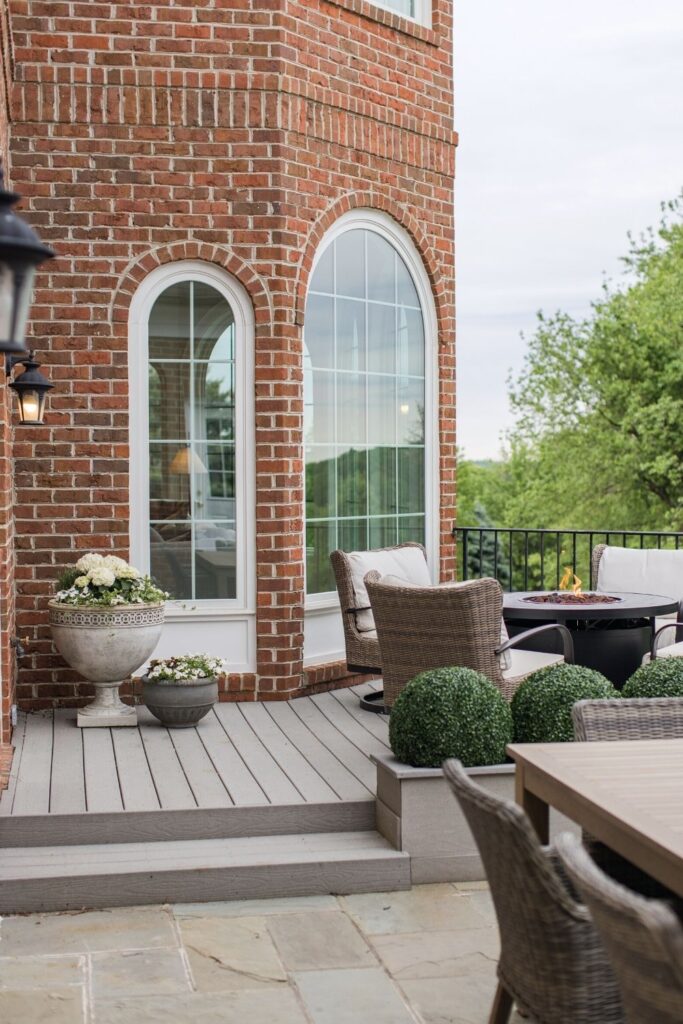
Classic Neutral Planters
FAQs
First add drainage rocks to the bottom of the planter. Add potting soil until it is about one to two inches from the top of the planter. Pat the soil down as you go along. Carefully remove the flowers/plants from their original container. Loosen the dirt and roots by gently squeezing the bottom. Set the flowers/plants in the new container in a hole the same depth as their original container. Once all the flowers and plants are installed, add any additional potting soil if necessary and gently pat it down around the plants. Give it a good watering!
This is optional and comes down to personal preference. If you have a planter that is made of plastic, using drainage rocks is a great way to weigh them down and prevent them from blowing over.
No, you do not need to line an outdoor planter. The potting soil goes directly into the planter.
Yes, it is recommended to remove the old soil when repotting since the previous plants/flowers may have absorbed all the nutrients in the soil. Adding fresh potting soil is the best way to ensure a healthy growing season.
Adding drainage rocks is a great way to weigh down a planter and prevent it from blowing over. If this continues to be a problem, you may consider switching your planter style to one that is larger at the base and less top-heavy.
Yes, outdoor planters need holes at the bottom for the water to escape. Otherwise your plants will drown in a water-mud soup.

About The Authors
John and Megan are the founders of Arched Manor, which is a passion-project turned business featuring home design, renovations, DIY tutorials, décor, e-Design, and 3-D rendering services. This married couple lives in Leesburg, Virginia, and is currently renovating The Arched Manor, a brick colonial house built in 2000.


